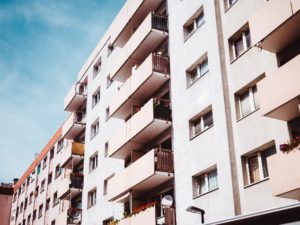As communities are considering and adopting laws to require multi-unit housing to be smokefree, there are important considerations to help these laws be effective at protecting the health, safety, and stability of all residents—both non-smokers and people who smoke.
Health departments, tobacco control coalitions, and community partners may want to consider the following information and messages to help inform discussions with residents, housing providers, policy makers, and the broader community

- All residents, regardless of their financial situation, deserve to have a stable and healthy living environment, including the right to breathe smokefree air at home.
- Smokefree multi-unit buildings create a healthier living environment for all residents, including people who smoke and their families.
- The goal of smokefree policies for multi-unit housing is to reduce secondhand smoke exposure by fostering good compliance and to support, rather than punish, residents.
- Smokefree policies do not mean that people who smoke have to quit, and it does not mean that people who smoke have to move out. People who smoke simply need to go outdoors to appropriate areas to do so.
- Residents should be involved in the policy planning, adopting, implementation, and enforcement process. Input from residents helps develop a policy that protects the health and safety of all residents.
- We want to protect and involve lower-income residents who have more exposure to secondhand smoke, more health disparities related to secondhand smoke exposure, and who are significantly impacted by both the housing affordability crisis and by the COVID-19 pandemic.
- Smokefree housing policies should be adopted and enforced in an equitable way that supports residents (both people who smoke and who do not smoke), reduces financial penalties, and reduces contact with law enforcement.
- Housing providers, residents, and community partners should discuss what a successful law would look like and what equitable enforcement could look like for their property or community.
- Enforcement should be a complaint-driven process, just like other smokefree policies and laws. No one is going out into the community to try to find someone who’s smoking in their apartment.
- Housing providers should have a graduated enforcement process for responding to reports of smoking violations, which should first center on education.
- Consider working with health departments and community-based organizations for education and compliance support.
- A graduated enforcement process might look like a resident receiving educational information, cessation support referrals, and warning letters for their first few violations. Then there could be a consideration of graduated fines, community service, or other consequences for additional violations.
- The intention is to build compliance and support for smokefree housing policies, where residents who smoke come to understand and respect the smokefree policy in order to create a healthier living environment for their fellow residents, even if they do not like the policy.
- The aim to achieve good compliance without resorting to eviction because we do not want to put anyone’s housing at risk. In practice, eviction for smokefree violations is very rare, and it can still be included as the last enforcement option, after other more supportive options are utilized.
May be reprinted with appropriate credit to the American Nonsmokers’ Rights Foundation.
Copyright 2022 American Nonsmokers’ Rights Foundation. All rights reserved.
